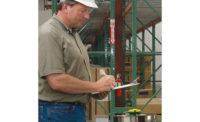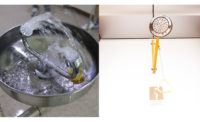Eyewash stations are critical emergency safety equipment intended to mitigate eye injuries when a worker has been exposed to a toxic substance, but if an eyewash station has not been properly maintained, using it could expose the worker to additional health hazards – or make the original injury worse.
To bring attention to issue, OSHA has published an InfoSheet, “Health Effects from Contaminated Water in Eyewash Stations.” This document details the importance of regular maintenance of emergency eyewashes to prevent buildup of infectious organisms, including acanthamoeba, pseudomonas and Legionella. Maintenance is needed whether the eyewash station is permanently connected to a source of potable water (i.e., plumbed) or has self-contained flushing fluid.
The International Safety Equipment Association (ISEA) has information on the subject available as well:
The standard requires a weekly activation “long enough to verify operation and ensure that flushing fluid is available,” and contains further information in an appendix: B7. Weekly Activation for Plumbed Emergency Eyewash and Shower Equipment
The intent of the weekly activation to be conducted on plumbed emergency eyewash and shower equipment is to ensure that there is a flushing fluid supply at the head of the device and to clear the supply line of any sediment build-up that could prevent fluid from being delivered to the head of the device and minimize microbial contamination due to stagnant water. The duration of this test is dependent on the volume of water contained in the unit itself and all sections of pipework that do not form part of a constant circulation system (also known as “dead leg” portions). Water in these sections is stagnant until a flow is activated by opening a valve. The goal is to flush out stagnant water in the dead leg completely. Where mixing valves are used, both the hot water and cold water supplies to the valve must be considered.
Additional Resources:
ISEA offers an Emergency Eyewash and Shower Equipment Selection, Installation and Use Guide, available for free on the association’s Web site, www.safetyequipment.org. For ANSI/ISEA Z358.1-2014 standard related questions: Call 703-525-1695 or use the ISEA Contact Us Form.






